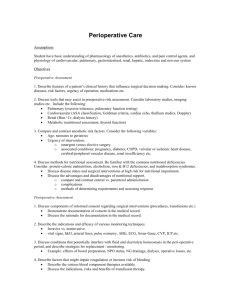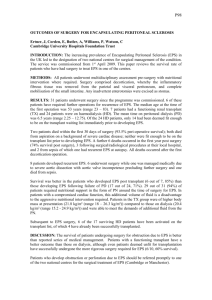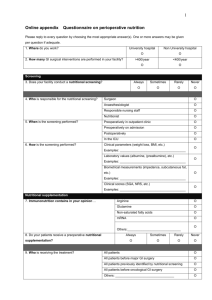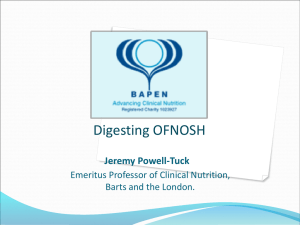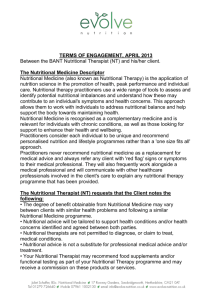Nutritional Status of Patients undergoing Surgical Peritonectomy For
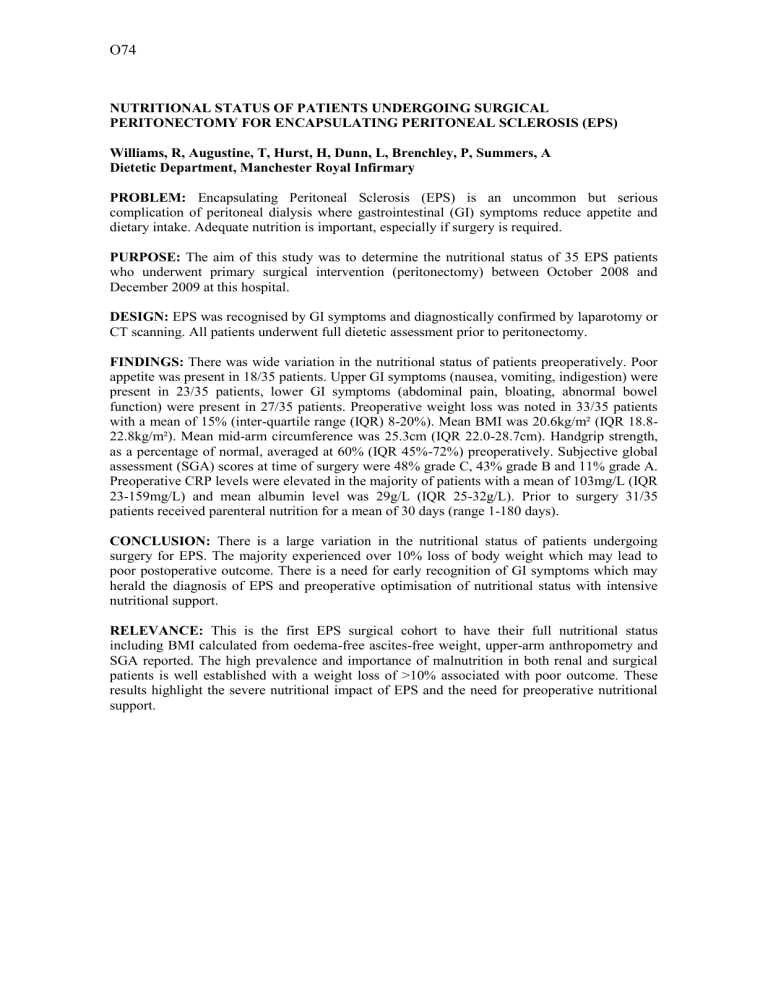
O74
NUTRITIONAL STATUS OF PATIENTS UNDERGOING SURGICAL
PERITONECTOMY FOR ENCAPSULATING PERITONEAL SCLEROSIS (EPS)
Williams, R, Augustine, T, Hurst, H, Dunn, L, Brenchley, P, Summers, A
Dietetic Department, Manchester Royal Infirmary
PROBLEM: Encapsulating Peritoneal Sclerosis (EPS) is an uncommon but serious complication of peritoneal dialysis where gastrointestinal (GI) symptoms reduce appetite and dietary intake. Adequate nutrition is important, especially if surgery is required.
PURPOSE: The aim of this study was to determine the nutritional status of 35 EPS patients who underwent primary surgical intervention (peritonectomy) between October 2008 and
December 2009 at this hospital.
DESIGN: EPS was recognised by GI symptoms and diagnostically confirmed by laparotomy or
CT scanning.
All patients underwent full dietetic assessment prior to peritonectomy.
FINDINGS: There was wide variation in the nutritional status of patients preoperatively. Poor appetite was present in 18/35 patients. Upper GI symptoms (nausea, vomiting, indigestion) were present in 23/35 patients, lower GI symptoms (abdominal pain, bloating, abnormal bowel function) were present in 27/35 patients. Preoperative weight loss was noted in 33/35 patients with a mean of 15% (inter-quartile range (IQR) 8-20%). Mean BMI was 20.6kg/m² (IQR 18.8-
22.8kg/m²). Mean mid-arm circumference was 25.3cm (IQR 22.0-28.7cm). Handgrip strength, as a percentage of normal, averaged at 60% (IQR 45%-72%) preoperatively. Subjective global assessment (SGA) scores at time of surgery were 48% grade C, 43% grade B and 11% grade A.
Preoperative CRP levels were elevated in the majority of patients with a mean of 103mg/L (IQR
23-159mg/L) and mean albumin level was 29g/L (IQR 25-32g/L). Prior to surgery 31/35 patients received parenteral nutrition for a mean of 30 days (range 1-180 days).
CONCLUSION: There is a large variation in the nutritional status of patients undergoing surgery for EPS. The majority experienced over 10% loss of body weight which may lead to poor postoperative outcome. There is a need for early recognition of GI symptoms which may herald the diagnosis of EPS and preoperative optimisation of nutritional status with intensive nutritional support.
RELEVANCE: This is the first EPS surgical cohort to have their full nutritional status including BMI calculated from oedema-free ascites-free weight, upper-arm anthropometry and
SGA reported. The high prevalence and importance of malnutrition in both renal and surgical patients is well established with a weight loss of >10% associated with poor outcome. These results highlight the severe nutritional impact of EPS and the need for preoperative nutritional support.
